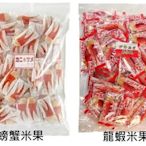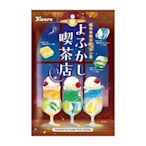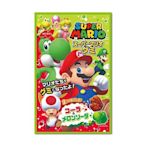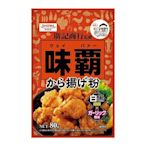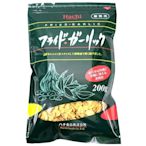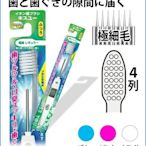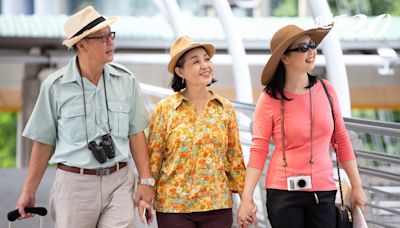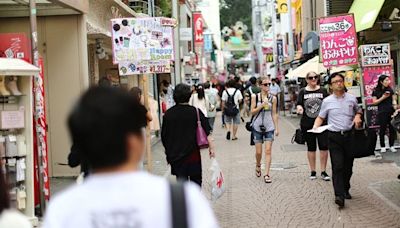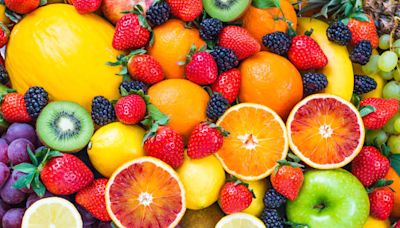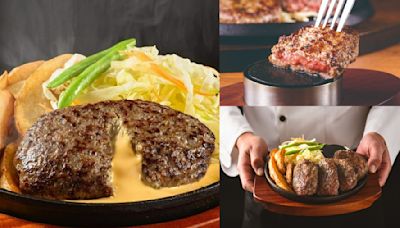搜尋結果
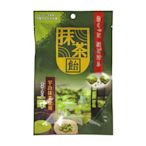 $79+東瀛go+ 大丸本舖 抹茶飴 43.2g 硬糖 抹茶糖 宇治抹茶 無色素 無香料 日本必買 日本進口+東瀛go+799超取免運全店現貨
$79+東瀛go+ 大丸本舖 抹茶飴 43.2g 硬糖 抹茶糖 宇治抹茶 無色素 無香料 日本必買 日本進口+東瀛go+799超取免運全店現貨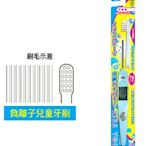 $120【iBILLY】現貨~日本必買推薦~KISS YOU負離子 兒童專用牙刷以後刷牙不用牙膏我愛小比利ibilly 限時特惠中
$120【iBILLY】現貨~日本必買推薦~KISS YOU負離子 兒童專用牙刷以後刷牙不用牙膏我愛小比利ibilly 限時特惠中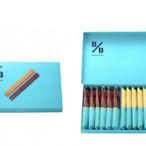 $750《阿肥小舖》東京晴空戀巧 Tokyo Campanella 年輪蛋糕棒 12入盒裝 日本必買伴手禮【阿肥小舖】日本伴手禮代購
$750《阿肥小舖》東京晴空戀巧 Tokyo Campanella 年輪蛋糕棒 12入盒裝 日本必買伴手禮【阿肥小舖】日本伴手禮代購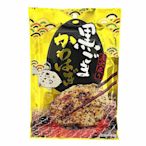 $89+東瀛go+ 小島食品 芝麻風味魚乾 31g 黑芝麻 魚餅 魚乾 芝麻 餅乾 海鮮 直火炙燒 日本必買 日本進口+東瀛go+799超取免運全店現貨
$89+東瀛go+ 小島食品 芝麻風味魚乾 31g 黑芝麻 魚餅 魚乾 芝麻 餅乾 海鮮 直火炙燒 日本必買 日本進口+東瀛go+799超取免運全店現貨![+東瀛go+ 日本原裝 Newest 新西 伊勢海老龍蝦米果 螃蟹風味米果 拜拜 日本仙貝 送禮首選 年貨 日本必買 +東瀛go+ 日本原裝 Newest 新西 伊勢海老龍蝦米果 螃蟹風味米果 拜拜 日本仙貝 送禮首選 年貨 日本必買]() $439+東瀛go+ 日本原裝 Newest 新西 伊勢海老龍蝦米果 螃蟹風味米果 拜拜 日本仙貝 送禮首選 年貨 日本必買+東瀛go+799超取免運全店現貨
$439+東瀛go+ 日本原裝 Newest 新西 伊勢海老龍蝦米果 螃蟹風味米果 拜拜 日本仙貝 送禮首選 年貨 日本必買+東瀛go+799超取免運全店現貨![+東瀛go+ 湖池屋 煙燻胡椒鹽/松露鹽/濃厚番茄風味玉米餅 68g 玉米餅 玉米餅乾 日本必買 拜拜 日本原裝 +東瀛go+ 湖池屋 煙燻胡椒鹽/松露鹽/濃厚番茄風味玉米餅 68g 玉米餅 玉米餅乾 日本必買 拜拜 日本原裝]() $59+東瀛go+ 湖池屋 煙燻胡椒鹽/松露鹽/濃厚番茄風味玉米餅 68g 玉米餅 玉米餅乾 日本必買 拜拜 日本原裝+東瀛go+799超取免運全店現貨
$59+東瀛go+ 湖池屋 煙燻胡椒鹽/松露鹽/濃厚番茄風味玉米餅 68g 玉米餅 玉米餅乾 日本必買 拜拜 日本原裝+東瀛go+799超取免運全店現貨![+東瀛go+甘樂 kanro 喫茶店蘇打風味糖 65g 蘇打冰淇淋 喫茶店 深夜咖啡店 獨立包裝 日本必買 日本原裝 +東瀛go+甘樂 kanro 喫茶店蘇打風味糖 65g 蘇打冰淇淋 喫茶店 深夜咖啡店 獨立包裝 日本必買 日本原裝]() $85+東瀛go+甘樂 kanro 喫茶店蘇打風味糖 65g 蘇打冰淇淋 喫茶店 深夜咖啡店 獨立包裝 日本必買 日本原裝+東瀛go+799超取免運全店現貨
$85+東瀛go+甘樂 kanro 喫茶店蘇打風味糖 65g 蘇打冰淇淋 喫茶店 深夜咖啡店 獨立包裝 日本必買 日本原裝+東瀛go+799超取免運全店現貨![日本製 三菱 MITSUBISHI NJ-XSC10J 六人份 雙層炭 備長炭內釜 蒸氣回收 NJ-XS108J 後繼 日本必買 日本製 三菱 MITSUBISHI NJ-XSC10J 六人份 雙層炭 備長炭內釜 蒸氣回收 NJ-XS108J 後繼 日本必買]() $15888日本製 三菱 MITSUBISHI NJ-XSC10J 六人份 雙層炭 備長炭內釜 蒸氣回收 NJ-XS108J 後繼 日本必買Y4847592154
$15888日本製 三菱 MITSUBISHI NJ-XSC10J 六人份 雙層炭 備長炭內釜 蒸氣回收 NJ-XS108J 後繼 日本必買Y4847592154![+東瀛go+NOBEL 諾貝爾 超級瑪利歐雙味造型軟糖 50g 軟糖 SUPER MARIO 可樂 哈密瓜 日本必買 +東瀛go+NOBEL 諾貝爾 超級瑪利歐雙味造型軟糖 50g 軟糖 SUPER MARIO 可樂 哈密瓜 日本必買]() $65+東瀛go+NOBEL 諾貝爾 超級瑪利歐雙味造型軟糖 50g 軟糖 SUPER MARIO 可樂 哈密瓜 日本必買+東瀛go+799超取免運全店現貨
$65+東瀛go+NOBEL 諾貝爾 超級瑪利歐雙味造型軟糖 50g 軟糖 SUPER MARIO 可樂 哈密瓜 日本必買+東瀛go+799超取免運全店現貨![+東瀛go+ SHOWA 昭和產業 味霸香蒜椒鹽炸雞粉 80g 廣記商行監修 味霸 炸雞粉 調理粉日本必買 日本進口 +東瀛go+ SHOWA 昭和產業 味霸香蒜椒鹽炸雞粉 80g 廣記商行監修 味霸 炸雞粉 調理粉日本必買 日本進口]() $89+東瀛go+ SHOWA 昭和產業 味霸香蒜椒鹽炸雞粉 80g 廣記商行監修 味霸 炸雞粉 調理粉日本必買 日本進口+東瀛go+799超取免運全店現貨
$89+東瀛go+ SHOWA 昭和產業 味霸香蒜椒鹽炸雞粉 80g 廣記商行監修 味霸 炸雞粉 調理粉日本必買 日本進口+東瀛go+799超取免運全店現貨![+東瀛go+ 日本進口 Hachi 哈奇 油炸蒜片 業務用 -200g 香酥 蒜片 下酒零食 日本必買 +東瀛go+ 日本進口 Hachi 哈奇 油炸蒜片 業務用 -200g 香酥 蒜片 下酒零食 日本必買]() $389+東瀛go+ 日本進口 Hachi 哈奇 油炸蒜片 業務用 -200g 香酥 蒜片 下酒零食 日本必買+東瀛go+799超取免運全店現貨
$389+東瀛go+ 日本進口 Hachi 哈奇 油炸蒜片 業務用 -200g 香酥 蒜片 下酒零食 日本必買+東瀛go+799超取免運全店現貨![【iBILLY】現貨+預購~日本必買推薦~KISS YOU負離子牙刷:替換刷毛(2入)*1 以後刷牙不用牙膏囉 【iBILLY】現貨+預購~日本必買推薦~KISS YOU負離子牙刷:替換刷毛(2入)*1 以後刷牙不用牙膏囉]() $100【iBILLY】現貨+預購~日本必買推薦~KISS YOU負離子牙刷:替換刷毛(2入)*1 以後刷牙不用牙膏囉我愛小比利ibilly 限時特惠中
$100【iBILLY】現貨+預購~日本必買推薦~KISS YOU負離子牙刷:替換刷毛(2入)*1 以後刷牙不用牙膏囉我愛小比利ibilly 限時特惠中
Japan is an island country in East Asia.It is in the northwest Pacific Ocean and is bordered on the west by the Sea of Japan, extending from the Sea of Okhotsk in the north toward the East China Sea, Philippine Sea, and Taiwan in the south. Japan is a part of the Ring of Fire, and spans an archipelago of 14,125 islands, with the five main islands being Hokkaido, Honshu (the "mainland ...
- Japanese yen (¥)
Japan portal. v. t. e. The first human inhabitants of the Japanese archipelago have been traced to the Paleolithic, around 38–39,000 years ago. [1] The Jōmon period, named after its cord-marked pottery, was followed by the Yayoi period in the first millennium BC when new inventions were introduced from Asia.
- History
- Nutrition
- Appearance and Consumption
- Production Process
- End Product
- Related Products
- Gallery
Sources differ about the earliest origin of nattō. One theory is that nattō was codeveloped in multiple locations in the distant past, since it is simple to make with ingredients and tools commonly available in Japan since ancient times.
Nattō is 55% water, 13% carbohydrates, 19% protein, and 11% fat (table). In a 50 grams (1.8 ounces) serving, nattō supplies 110 calories and is a rich source (20% or more of the Daily Value, DV) of several dietary minerals, especially iron (33% DV) and manganese (73% DV), and vitamin K (542% DV). Nattō contains some B vitamins and vitamin Cin moder...
Nattō has a distinctive odor, somewhat akin to a pungent aged cheese. Stirring nattō produces many sticky strings. The dish is eaten cold with rice, mixed with the included soy sauce or karashi mustard. Other ingredients such as long onion or kimchiare often added. Nattō is frequently eaten as nattō gohan (nattō on rice). Nattō is occasionally used...
Commercial
Nattō is made from soybeans, typically nattō soybeans. Smaller beans are preferred, as the fermentation process will be able to reach the center of the bean more easily. The beans are washed and soaked in water for 12 to 20 hours to hydrate them, and increase their size. Next, the soybeans are steamed for six hours, although a pressure cooker may be used to reduce the time. The cooked beans are mixed with the bacterium Bacillus subtilis, known as nattō-kin in Japanese. From this point on, car...
Home
Nattōcontinues to be a popular home fermentation with some families starting new batches daily. Home production was historically done using rice straw to maintain moisture and as insulation with placement in naturally warmer parts of the home or fermentation shed, but is now done with moist towels over glass pans or preferrated plastic wrap on thermostat controlled heating pads. At home fermentation machines are also available, but are rarely marketed specifically for natto as natto is a less...
Mass-produced nattō is sold in small polystyrenecontainers. A typical package contains two, three, or occasionally four containers, each 40 to 50 g. One container typically complements a small bowl of rice. Nattō odor comes from diacetyl and pyrazines, but if it is allowed to ferment too long, then ammoniais released. The fermenting of Nattō develo...
Many countries around Asia also produce similar traditional soybean foods fermented with Bacillus bacteria, such as shuǐdòuchǐ (水豆豉) of China, cheonggukjang (청국장) of Korea, thua nao (ถั่วเน่า) of Thailand, kinema of Nepal and the Himalayan regions of West Bengal and Sikkim, tungrymbai of Meghalaya, hawaijaar of Manipur, bekang um of Mizoram, akhuni...
A nattōbean-size legend using beans before fermentation in a supermarketNattōbeing stirred with chopsticksNattō gunkan maki (Nattō sushi)Nattō wrapped in rice straw, old-style nattōpackage129,000–226,000. On 6 and 9 August 1945, the United States detonated two atomic bombs over the Japanese cities of Hiroshima and Nagasaki. The bombings killed between 129,000 and 226,000 people, most of whom were civilians, and remain the only use of nuclear weapons in an armed conflict. Japan surrendered to the Allies on 15 August, six days ...
Japanese yen. USD /JPY exchange rate 1971–2023. The yen ( Japanese: 円, symbol: ¥; code: JPY) is the official currency of Japan. It is the third-most traded currency in the foreign exchange market, after the United States dollar and the euro. [2] . It is also widely used as a third reserve currency after the US dollar and the euro.
The Empire of Japan, also referred to as the Japanese Empire, Imperial Japan, or simply Japan, was the Japanese nation-state that existed from the Meiji Restoration in 1868 until the enactment of the reformed Constitution of Japan in 1947. From 29 August 1910 to 2 September 1945, the Empire of Japan included the naichi (present-day Japan, Kuril, and post-1943 Karafuto) and the gaichi (Korea ...
Japanese (日本語, Nihongo, [ɲihoŋɡo] ⓘ) is the principal language of the Japonic language family spoken by the Japanese people. It has around 120 million speakers, primarily in Japan, the only country where it is the national language, and within the Japanese diaspora worldwide. The Japonic family also includes the Ryukyuan languages ...
